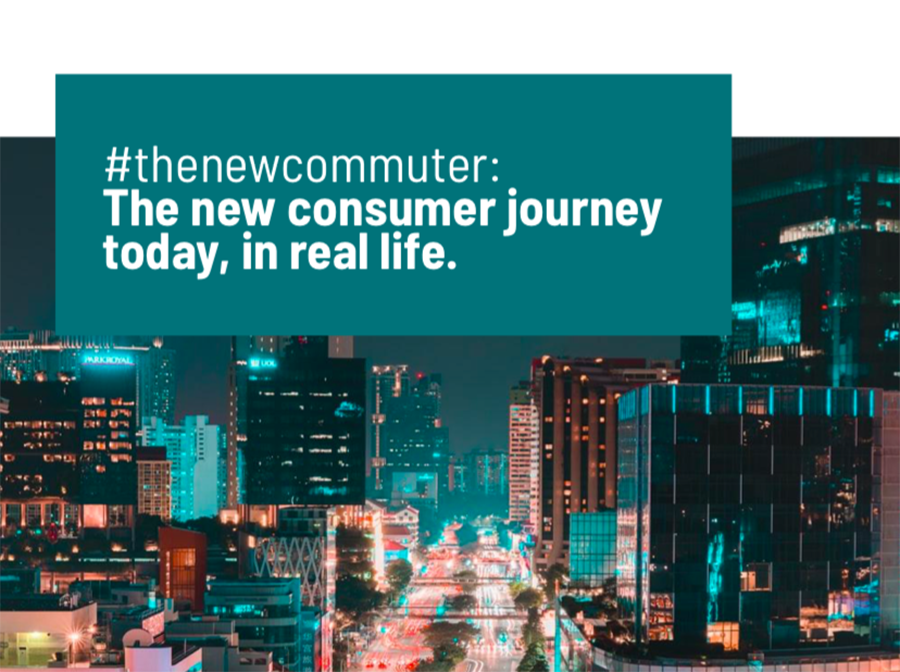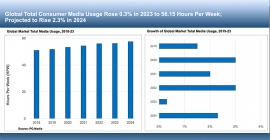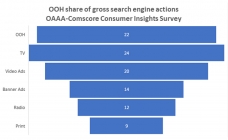Havas Media Group Singapore, Clear Channel Singapore uncover #thenewcommuter in the New Normal
By Rajiv Raghunath - July 27, 2022
The study breaks down the confluence of tech, data and consumer trends to examine the impact of Cov-19 on consumers and their commuting behaviours, how they affect mobility and the evolving state of outdoor advertising.

In conjunction with Clear Channel Singapore, Havas Media Group Singapore peeks into the immediate post-COVID future of people & places: their new attitudes and new mobility patterns, to better understand what is termed as: #thenewcommuter.
Harnessing insights into shifting consumer mindsets with Havas Group’s Prosumer research along with Clear Channel’s audience-understanding analytics system LEXI, the study breaks down the confluence of tech, data and consumer trends to examine the impact of Cov-19 in consumers and their commuting behaviours, how they affect mobility and the evolving state of outdoor advertising in the foreseeable future.
Jacqui Lim, CEO of Havas Media Group Singapore commented: “As we enter a new phase of re- opening of the economy, resumption of all social activities and hybrid work arrangements, a fresh wave of consumer behaviours and habits will surface with renewed hope and energy. Together with Clear Channel Singapore, we seek to examine these observations and trends and how it impacts brands as we embark on a much-evolved approach to outdoor planning in this current landscape.”
Kelly Khoo, CEO of Clear Channel Singapore expressed similar sentiments, “The leading trends that underpin #thenewcommuter are hybrid working, in which it creates new and different pockets of peak periods throughout the day, with dispersed pockets of consumers engaging in activities closer to home. With Havas Group’s Prosumer study, we uncover a new understanding of the consumer journey today with their renewed sentiments and mobility patterns.”
Life after the pandemic: what is the ‘next normal’ for mobility?
A Clear Channel Singapore release on the study cites that “What was once termed as the ‘new normal’ rising from the pandemic has now led to consumers feeling a sense of digital device burnout. We’ve out-Zoomed, out-Housepartied and in doing so, out- stressed ourselves. With restrictions lifted recently, the ‘next normal’ is all about the great outdoors for #thenewcommuter, signalling a more prominent role for OOH advertising moving forward.”
The study uncovers 5 key transitions that give rise to #thenewcommuter and how brands can stay in touch and engage with consumers outdoors:
#1 - Shifting Mobility Behaviours
With the majority of consumers on hybrid work arrangements, the new ’workday’ is redefining their movements and patterns around and within the weekday. Pursuing new interests and lifestyles that
are built around their suburban communities, the pandemic has brought about new-found interest in exploring their own backyards, especially with cycling and foot trails. Therefore, with greater movement in and around the heartlands, brands should explore segmenting and catering to audiences based not just on shared beliefs and interests, but also their geographical affinities.
#2 - Shifting Use of Data & Technology
The unpredictability of commuting behaviours and their corresponding data have upended the advertising business and accelerated the build of innovative technologies. Companies today are finding new ways of reaching consumers through proprietary tools serving targeted ads, or engaging ad-tech and mar-tech companies for assistance. The transformation from data to information is essential as it allows brands to make quicker and more intelligent decisions.
#3 - Shifting Targeting Models
Technology and data allow us to bring a more audience-centric approach that makes designing for OOH not just an art, but also a data-driven science. One such example is Clear Channel Singapore’s suite of OutSmart Solutions comprising of: OutSmart Pin, a smart-targeting and audience-planning tool that combines location proximity to point-of-interest with audience and brand affinity; OutSmart Pro, Singapore’s first built-for-purpose exchange for programmatic DOOH (pDOOH) buy which enables marketers to reach audiences where they live, work and play; and OutSmart Connect, providing the O2O experience by targeting those who have seen an OOH ad (static and/or digital OOH) and drive an action on mobile.
#4 - Shifting Advertising Landscape
Today, there is a stronger shift towards ‘pull’ content versus ‘push’ content, the former being subscription-based entertainment media and the latter being media channels that also act as advertising media channels. It’s rational, therefore, to expect that OOH will be one of such pureplay channels within the marketing mix.
Additionally, with digital privacy rising as a looming concern by consumers and the industry scrambling towards a ‘first-party identity resolution’ or a ‘first-party data’ approach, marketers will be encouraged to drive greater personalisation through the sole use of context. Here, OOH is well-placed to serve both audiences who are happy to trade their data and those who wish to remain private.
#5 - Shifting OOH Technology
The increased adoption of digital screens along with new innovations in data and commerce has led to OOH ideas that have greater interactivity than ever before. From being able to transform a frosted screen to clear glass in a second with a single touch, to allowing brands to receive or screen dynamic live data, OOH can offer not just sharper audience targeting but also a more personalised experience.

Stay on top of OOH media trends








